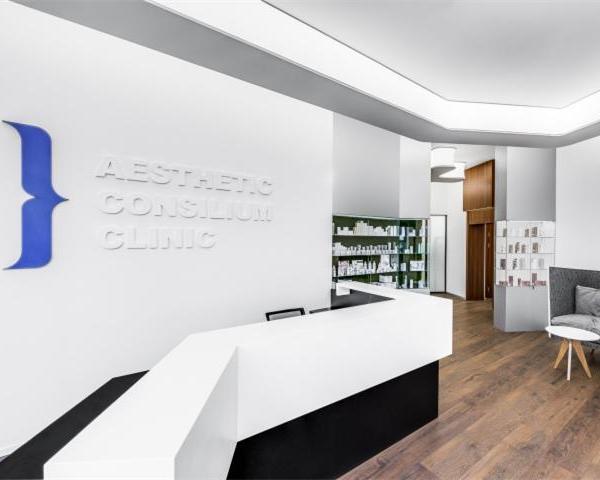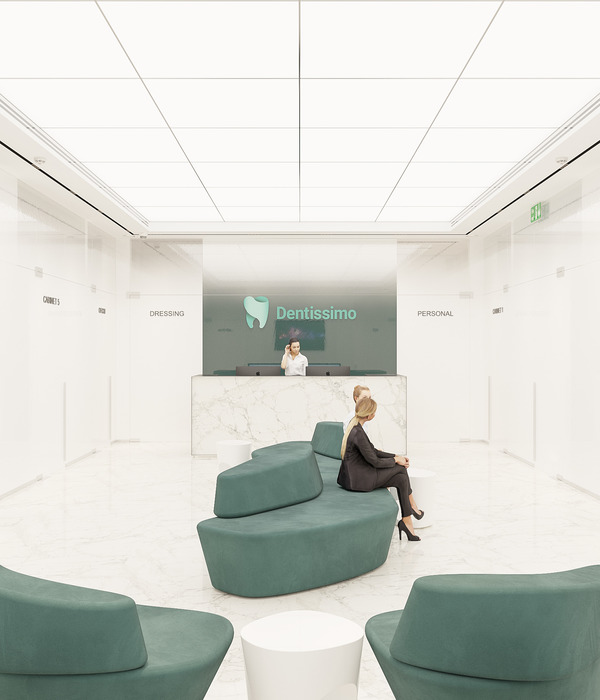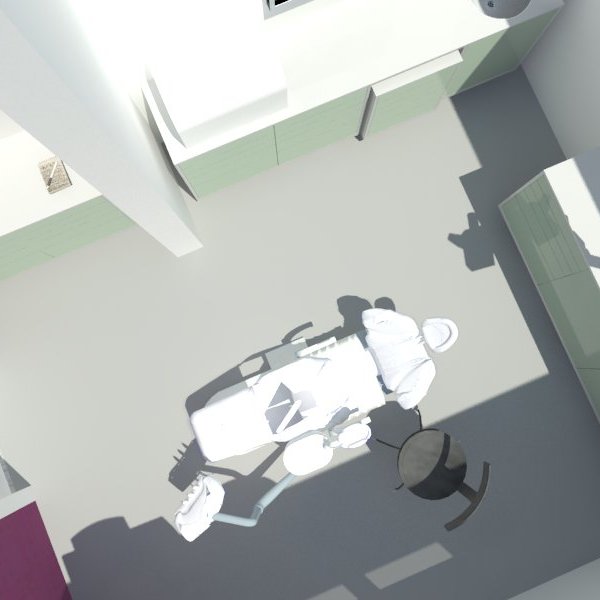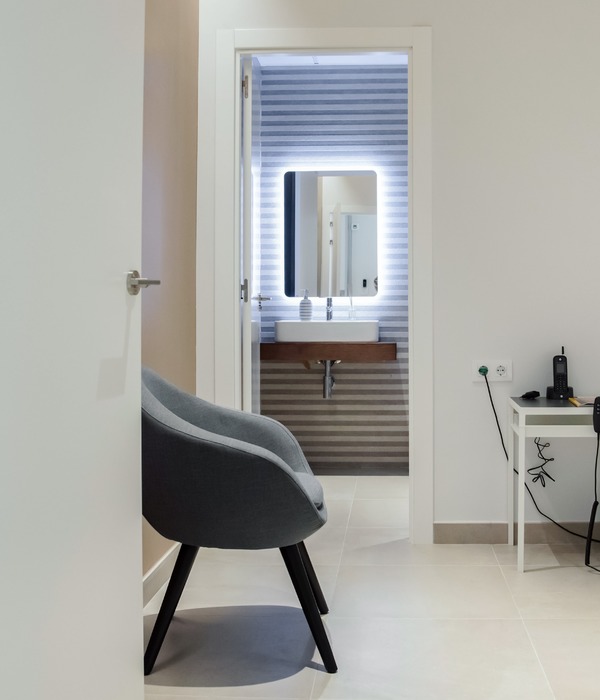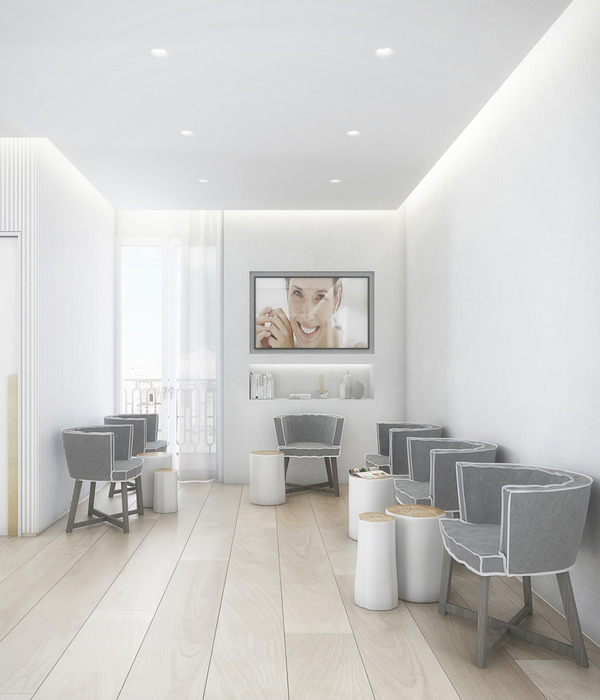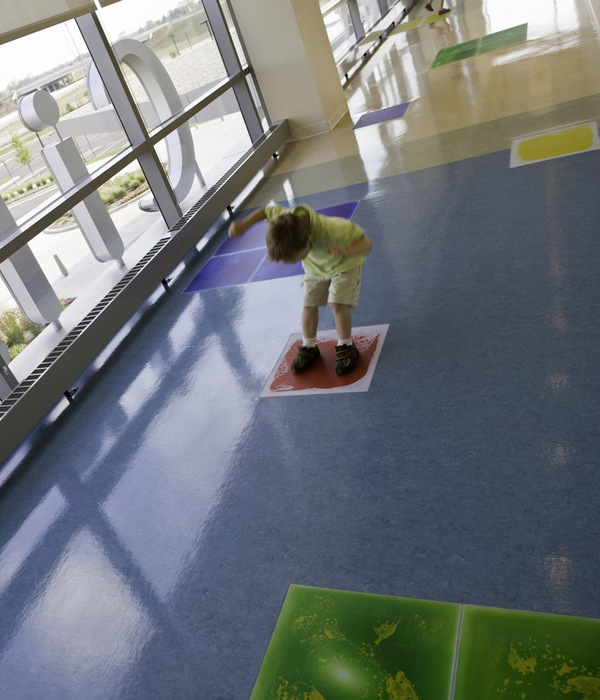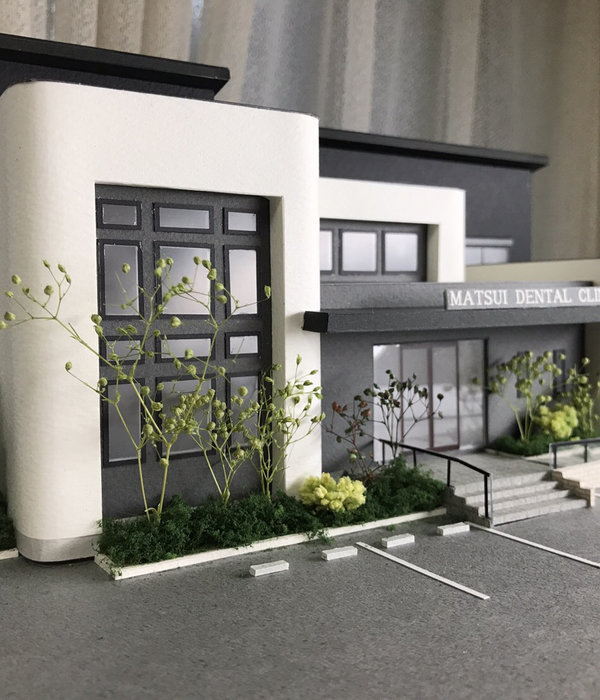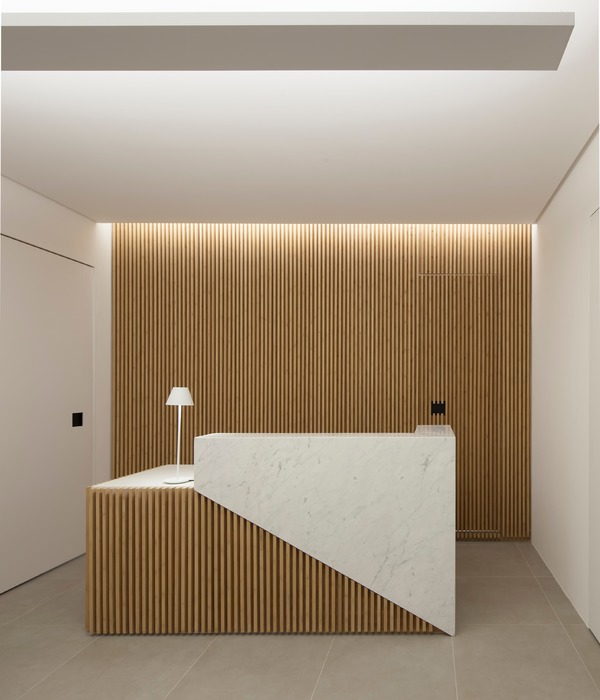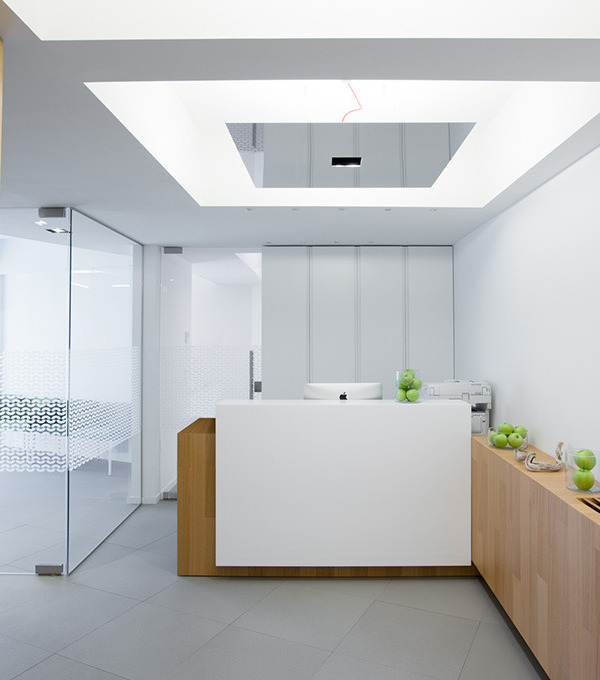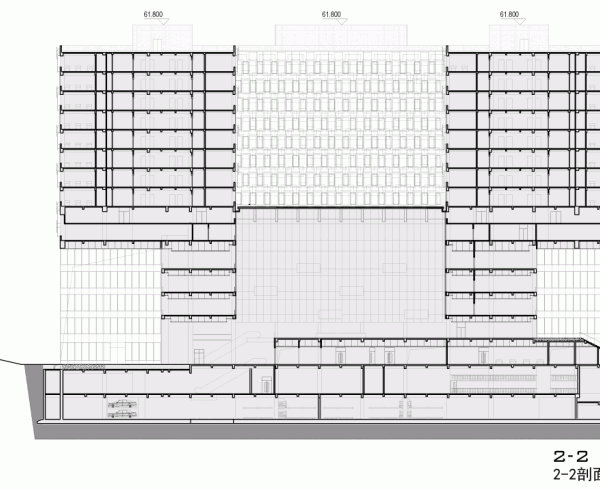项目坐落于名古屋市北部,人口众多的居住区内。建筑师为该项目设计了一个出挑的木屋檐来衔接内部空间与繁忙的城市街道。
The site is located in the north part in Nagoya city, where is known a good residential area and has a large population. We set the large wood eaves extended from inside of the building to a tangent between the town that has traffic laden street.
▼项目概览,project overview ©Hiroshi Tanigawa
▼项目主立面,main facade of the building ©Hiroshi Tanigawa
▼主入口,main entrance of the building ©Hiroshi Tanigawa
木屋檐形成了一个接待病人的柔性空间,即使在建筑外部,病人们也能保有安全感,犹如城市亲切好客的象征。
The large wood receive the patients and generates a space where the patients can feel the sense of secure even outside the building, being a symbol of the town.
▼出挑的木屋檐形成了一个接待病人的柔性空间, large wood receive the patients and generates a space where the patients can feel the sense of secure ©Hiroshi Tanigawa
门廊地面采用了手工瓷砖,停车场地面则采用了混凝土与草带,来共同营造公园的自然氛围。
We used hand-made tiles for the floor of the approach and concrete blocks for the parking space with grass, to achieve an atmosphere like a park.
▼门廊的手工瓷砖地面与有公园氛围的停车位, the hand-made tiles floor of the approach and the parking spaces with a park-like atmosphere ©Hiroshi Tanigawa
诊所内部,建筑师在候诊区设置了一个L型的通高空间。在这里,患者可以感受到温暖的阳光与开放的氛围。
Inside the clinic, we provided a waiting space where the patients can feel the warmth of sunny and an open feeling by setting the L-shaped open ceiling space along the tangent.
▼L型的通高候诊区,a waiting space with L-shaped open ceiling space ©Hiroshi Tanigawa
▼患者可以在通高空间里感受到温暖的阳光与开放的氛围,patients can feel the warmth of sunny and an open feeling by setting the L-shaped open ceiling space along the tangent ©Hiroshi Tanigawa
出挑的木檐与大厅L型的通高空间柔化了城市与诊所的边界,在两者之间形成过渡。这个区域除了作为建筑功能空间外,还为患者提供了一个舒适的候诊环境。
The large eaves and the L-shaped open ceiling space generate a gradation for the boundary between gradation town and the clinic. They created a comfortable intermediate space in addition to a function as a building space.
▼木檐与L型的通高空间形成了城市与诊所的过渡, large eaves and the L-shaped open ceiling space generate a gradation for the boundary between gradation town and the clinic ©Hiroshi Tanigawa
L型的通高空间,在视觉上,也将位于二层的康复室与候诊室以及诊所室内外空间连接起来。人们在二层同样能够享受到如在大厅一般舒适放松的就诊氛围。
The L-shaped open ceiling space connects a spaces of the rehabilitation room and the waiting room on the second floor in addition to the outside and the inside of use clinic so that the patients can spend relax, comfortable time as if they are being in a lobby.
▼L型的通高空间联系了一层与二层, L-shaped open ceiling space connects the spaces of two floors©Hiroshi Tanigawa
项目使用了大量的木质材料用于缓解患者的紧张感。人们在触摸到木材的时候,便可以感到安心。建筑为城镇带来了一丝温暖。
A plenty of wood material was used for portions touched by people directly for reducing nervousness. This building has “Warm transparency” for the town.
▼二层的康复理疗室,the rehabilitation room on the second floor©Hiroshi Tanigawa
为了支撑出挑的木檐与L型的通高空间,项目采用了带有支撑的钢架结构。二层的支撑结构形成了桁架,起到了关键性的作用。
To configure the large eaves and the L-shaped open ceiling space, we adopted a steel structure with a brace. A space truss on the upper part of the open ceiling space plays an important role.
▼带有支撑的钢架结构,steel structure with braces ©TSC Architects
▼二层的支撑结构形成了桁架,起到了关键性的作用,space truss on the upper part of the open ceiling space plays an important role ©Hiroshi Tanigawa
尽管Y型柱被木材包裹,建筑师还是有意将部分钢材暴露了出来,以展示钢支撑的作用。空间桁架由半尺寸的H型钢和扁钢制成,可以隐藏天花开口处的水平构件。
Although a steel Y-shaped column, which consists of the space truss, are interposed between the wood material, the steel members are intentionally visible to show the functional means of the steel member. To hide a horizontal member of the open ceiling space, the space truss is consisted of members of a half-size H-shaped steel and a flat bar.
▼部分暴露的钢材展示了钢支撑的作用,steel members are intentionally visible to show the function ©Hiroshi Tanigawa
立面上的刚性桁架结构与屋顶支撑了出挑的屋檐,同时保证了水平方向的荷载传递。
The surface rigidities of the space truss and the roof support the large eaves while securing a power transmission in the horizontal direction.
▼结构细部,detail of structure ©Hiroshi Tanigawa
▼总平面图,master plan ©TSC Architects
▼一层平面图,first floor plan ©TSC Architects
▼总平面图,second floor plan ©TSC Architects
▼立面图,elevations ©TSC Architects
▼剖面图,sections ©TSC Architects
Project Name: Takenaka Clinic Architecture: TSC Architects Completion Year:2019 Gross Built Area:543㎡ Project location: Nagoya , Aichi , Japan - Lead Architects: Yoshiaki Tanaka Photo credits: Hiroshi Tanigawa Photographer’s website: http://tololo.info/ Clients: Takenaka Clinic
{{item.text_origin}}

